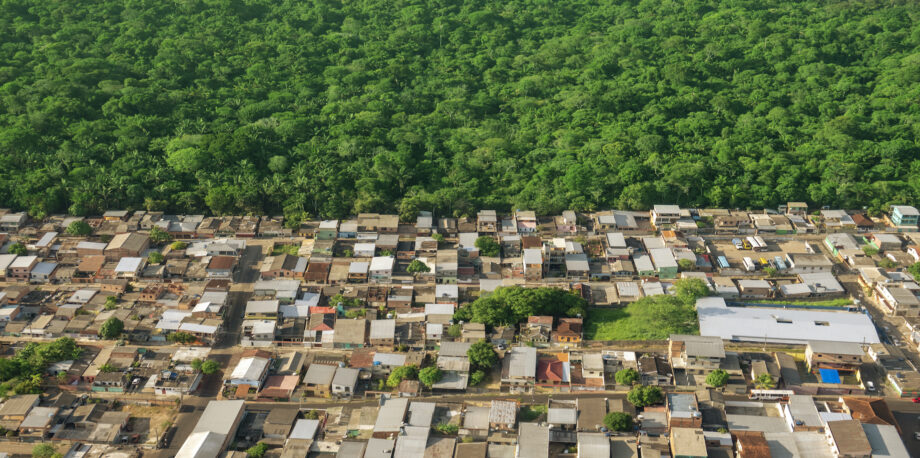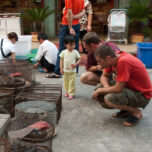April 1, 2022 — Deadly human, plant and animal diseases have been sweeping the world, emerging and spreading faster than ever as we pollute, cut down forests and come into closer contact with animal pathogens. With Covid-19 having infected over 400 million people, killed 6 million, and turned life as we know it upside down for pretty much everyone else, the need to reduce the risk of infectious disease is more compelling than ever.
Disease outbreaks are inevitable, but we are reaching a critical point in history where human-caused disruptions of climate, ecosystems and other dimensions of nature are exacerbating the risk, with profound implications for health.
Ebola, HIV, yellow fever, malaria and Nipah, among others, have all been linked to forest clearance. So have diseases such as Lyme disease and West Nile virus disease in Europe and elsewhere.
According to Richard Ostfeld, a disease ecologist at the Cary Institute of Ecosystem Studies, an independent nonprofit research institute in New York, biodiversity provides humans and animals with vital protection from infectious and inflammatory diseases. “The species that make us most ill often thrive on the edges of the fragmented forests which are created when roads are driven into them and land converted to farming,” he says. “When we reduce biodiversity, we inadvertently harm the species that can protect us. We see an increase in the species most likely to transmit new diseases to us, but there’s also good evidence that those same species are the best hosts for existing diseases.”
“If Covid-19 taught us anything, it is that testing, treatments and vaccines can prevent deaths, but they do not stop the spread of viruses across the globe and may never prevent the emergence of new pathogens,” Aaron Bernstein, director of the Center for Climate, Health, and the Global Environment at Harvard T.H. Chan School of Public Health said in a press release. “As we look to the future, we absolutely cannot rely on post-spillover strategies alone to protect us.”
Here are nine of the most important ways we can help reduce the risk of future disease by rethinking how we farm, eat, trade and interact with other species.
1. Protect Forests
Slowing deforestation and restoring damaged land is one key to preventing future pandemics, because biodiversity loss brings people into closer contact with wildlife such as bats, rodents and primates, which are most likely to transmit viral diseases to humans.
It is vital to protect the richness of nature, Ostfeld says. “When people degrade or destroy natural habitats, the animal community changes dramatically. Some of the most important hosts — the rodents and sometimes bats — often increase in abundance as their predators and competitors are driven away. They also tend to invade human dwellings and fields. So biodiversity loss increases contact rates between the rodents or bats and people, increasing the threat of infectious diseases.”
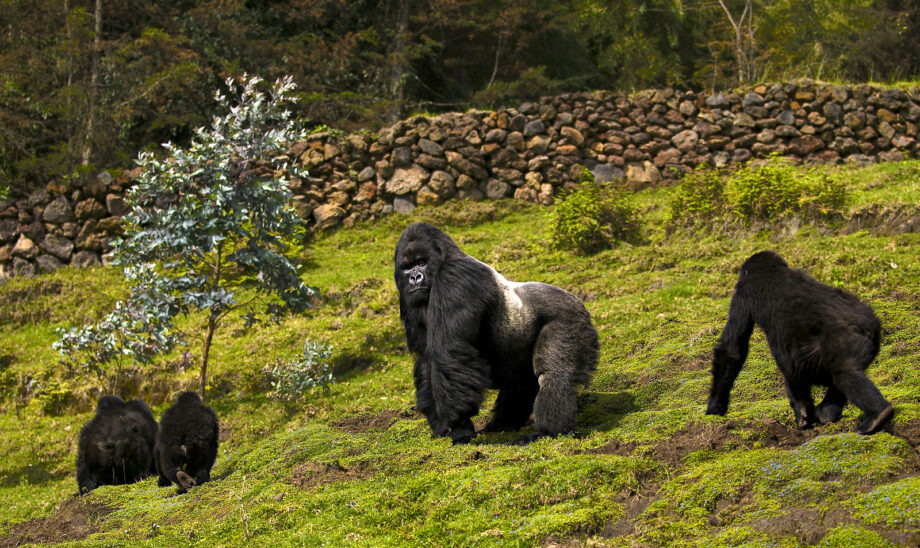
As farmland and cities eat into the edges of forests, the odds increase that humans will cross paths wild animals capable of transmitting new disease to us. Photo courtesy of youngrobv | Flickr
Kate Jones, professor of ecology and chair of ecology and biodiversity at UCL in London, has shown how biodiversity acts as a shield against disease. Bringing together data from hundreds of studies focused on a variety of ecosystems around the world, including farmland, forests, and urban areas, Jones and colleagues found that the lower the biodiversity and the more urbanized the habitat, the larger the populations of species that harbor diseases humans can catch.
Medical care can prevent deaths from pandemics, but it does not stop the spread of viruses or prevent the emergence of new pathogens, says Bernstein. In a new analysis, he and other scientists argue that pandemics must be stopped at source with actions such as reducing deforestation — a course that would cost about US$20 billion per year, or just 10% of the annual economic damage caused by zoonoses and 5% of the value of the lives lost.
2. Address Climate Change
Climate change is linked to pandemic risk because areas that become warmer and wetter may become more suitable for disease-carrying insects to adapt to and then breed and spread diseases like Zika, dengue, chikungunya or malaria.
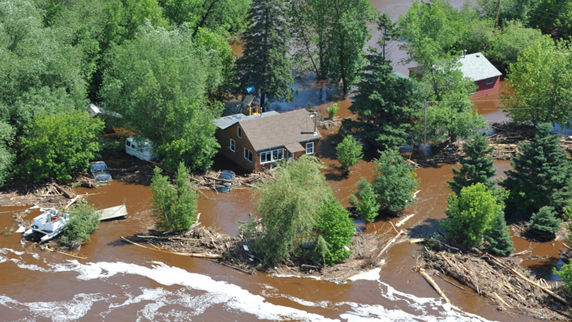
A warmer, wetter climate sets the stage for increased spread of infectious disease. Photo courtesy of Petty Officer 1st Class Matthew Schofield U.S. Coast Guard District 9
“Climate change is likely to alter human disease patterns fundamentally if it is not controlled,” says University of Toronto emeritus professor Daniel Brooks, author of The Stockholm Paradigm. “It does not produce disease itself but increases the risk of diseases happening. The planet is a minefield of evolutionary accidents waiting to happen. Now [that] we are in a period of accelerating climate activity, we should expect more emerging diseases.”
Working in Costa Rica and the Arctic, Brooks and colleagues have shown how a warming world is leading pathogens to jump more frequently from one host to another, suggesting a Pandora’s box of unknown pathogens will open unless we act now. New beetles are moving in on Siberian and U.S. forests; mammals in Alaska are struggling as new ticks arrive; and ecosystems from the Arctic Circle to the equator are infested with other new insects.
World Health Organization (WHO) research suggests climate change will cause around 250,000 additional deaths per year from malnutrition, diarrhea, heat stress and malaria, overwhelming health systems. It will also lead to complex ecosystem changes that will alter the ability of infectious disease vectors and organisms to thrive.
3. Stop Escapes
Fifty years ago there were just a few military and medical research laboratories thought safe enough to handle the viruses of deadly diseases like Ebola, HIV, Marburg, anthrax, avian flu and SARS. There are now 59 high level labs in operation or in some stage of development worldwide, and the risk of a pandemic starting from the accidental escape of a pathogen from one of them is being taken seriously. Security is tighter than it was, but scientists are increasingly using contentious “gain-of-function” research, which is focused on altering traits of pathogens.
Virus origins have often been subjects of conspiracy theories, but Lynn Klotz, senior science fellow at the nonprofit Center for Arms Control and Non-Proliferation, says the risk of escapes is not hypothetical. “There is widespread evidence that the world’s most secure labs have been the source of disease outbreaks, accidents and possibly two pandemics, including the swine flu scare of 1976 and the H1N1 human influenza pandemic of 1977,” he says.
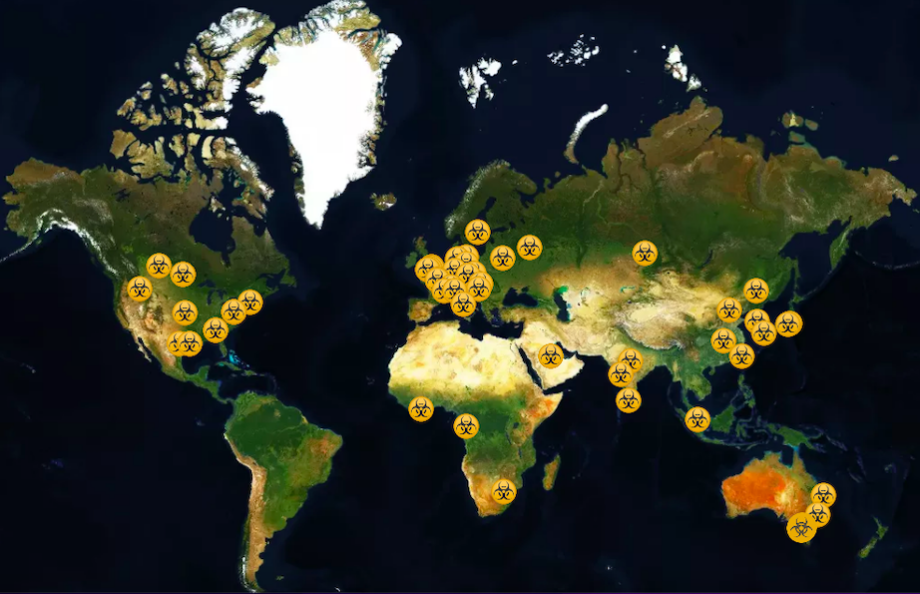
There are now 59 maximum containment labs — known as biosafety level 4 (BSL4) labs — operating or in some stage of planning worldwide, and there is a risk of a pandemic starting from the accidental escape of a pathogen from one of them. Photo courtesy of Filippa Lentzos. Click the map for an interactive version.
Klotz and others cite various instances, including smallpox and foot and mouth disease outbreaks in the UK, SARS in China and Taiwan, and numerous escapes from former-USSR military establishments.
Many scientists have argued that gain-of-function research is too risky, saying accidents will always happen. Others want higher global safety standards. “The risk of future pandemics originating from research with dangerous pathogens is real,” Filippa Lentzos, co-director of the Centre for Science and Security Studies at King’s College, London, and Gregory D. Koblentz, associate professor and director of the Master’s in Biodefense at George Mason University, wrote in a 2021 article at The Conversation. They noted that, according to the Global Health Security Index only about one-fourth of countries housing high-level labs earned high biosafety and biosecurity scores. “This is particularly concerning as gain-of-function research with coronaviruses is likely to increase as scientists seek to better understand these viruses and to identify which viruses pose a higher risk of jumping from animals to humans or becoming transmissible between humans,” they wrote.
4. Improve Cities
Crowded cities, especially in warm countries, can serve as incubators for pathogens and have long been hot spots of cholera and other infectious diseases. Today they mostly offer better health facilities than rural areas, but contagion spreads faster between people living close together.

Better urban planning can help control the spread of infectious disease and enhance our ability to deal with future pandemics. Photo © iStockphoto.com/powerofforever
In an age of growing urban populations, in which more than 1 billion people live in informal settlements and must share taps and latrines, improving urban infrastructure is now understood to be essential to reducing the threat of future pandemics.
“Covid was critical for the evolution of cities. It has starkly revealed the dire lack of adequate housing and services. The need for affordable water, waste and drainage is one of Covid’s overarching messages,” says Anna Walnycki, a senior researcher in the human settlements group at the International Institute for Environment and Development, an independent research organization in London.
“Residents already face overcrowded housing, minimal water, [issues with] sanitation and hygiene and other services, and high levels of tuberculosis, HIV/AIDS and other health conditions. It has shown how unless cities have decent infrastructure, you will never target any disease effectively,” she says.
Two additional trends now boost the threat of pandemics. Many wild animals like squirrels, rodents, birds and foxes have adapted well to modern cities, and some of these can harbour dangerous viruses. And exotic pet ownership runs the risk of passing pathogens to people.
Crowding increases disease contagion risk, says Somik Lall, a lead economist at the World Bank. “There is an urgent need to rethink and transform cities to respond to the reality of COVID-19 and potential future pandemics, and to recover better, by building more resilient, inclusive and sustainable cities,” the United Nations noted in a July 2020 policy brief, “COVID-19 in an Urban World.”
5. Limit Invasions
Myriad species of insect and weed, all of which evolved with unique pathogens and viruses in specific places, are now spread by the global trade of plants, pets and animals as well as tourism. Most of these species are harmless and do not live long in their new environments, but some escape, adapt and breed and go on to infect humans with deadly new diseases, allergies and bites.
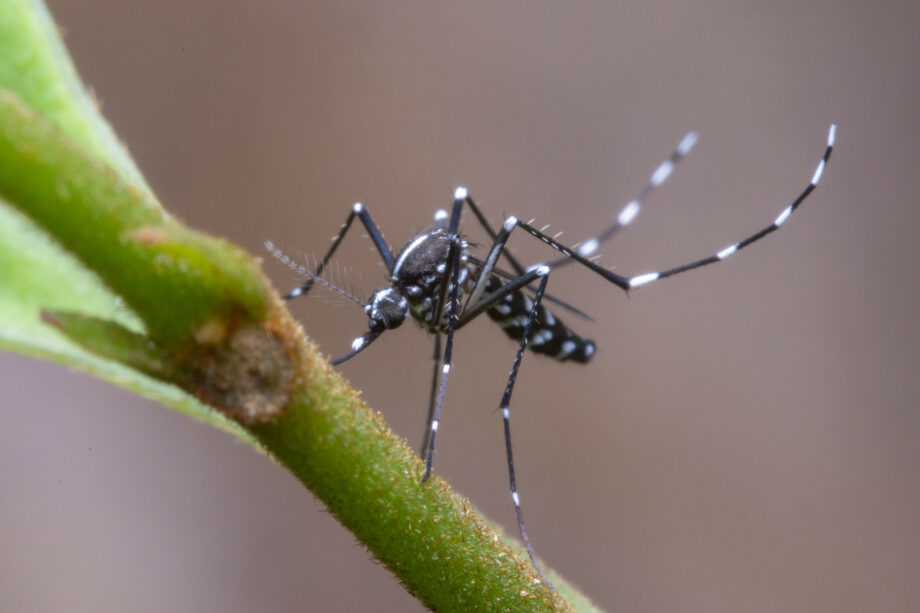
Spread accidentally through shipping, the Asian tiger mosquito is emerging around the world as a formidable carrier of infectious disease. Photo courtesy of budak | Flickr
Pests and pathogens now hitchhike unchecked across the world on exotic plants and on the backs of pet animals. Meanwhile, invasive species are harming U.S. and European forests, animals and farmland at a cost of billions of dollars per year.
Asian tiger mosquito numbers imported by accident in shipping containers have exploded in the past 30 years, leading to epidemics of dengue fever, chikungunya and West Nile virus; tropical diseases such as yellow fever and Zika are invading new regions after being taken there by plane and boat.
“It is as if nature has been put on fast forward. The number of alien biological species has increased continuously over the last 200 years and we should expect more in the near future,” says researcher Hanno Seebens from the Senckenberg Biodiversity and Climate Research Centre in Frankfurt, Germany.
“[M]any invasive alien species have become sufficiently widespread across multiple continents … that they could be viewed as pandemic,” wrote Philip Hulme, a distinguished professor in the Bio-Protection Research Center at Lincoln University, in Canterbury, New Zealand, in a 2021 article in Bioscience. Hulme argues that the increasing pandemic danger posed by alien species now needs new international laws.
Biologist Elena Tricarico at the University of Florence in Italy, a co-editor of Invasive Species and Human Health, argues that while it may be impossible to inspect all the plants and animals now transported around the world, we must learn to rely more on native or local resources.
“The rate of introduction of alien species is increasing, and humans are menaced. They are an increasing threat to human health, with impacts ranging from allergies and poisoning, to disease and death,” she says.
6. Change Farming
Rearing poultry and other animals on an industrial scale, often indoors and in overcrowded squalid conditions, is a recipe for pathogens to mutate and spill between animals and then to humans. Avian flu viruses are able to spread easily between animals and jump to humans, are found in the world’s poultry farms and are considered likely candidates for a future pandemic.
WHO investigators have suggested that Covid-19 may have been linked to the intensive breeding of animals in Southeast Asia’s many farms, where many animals are raised intensively, often without inspection and in unhygienic conditions. UN bodies, academics, veterinarians and epidemiologists recognize a link between the emergence of highly pathogenic avian flu viruses and intensive poultry farming. According to the UN’s Food and Agriculture Organization, “a pathogen may turn into a hyper-virulent disease agent; in monocultures involving mass rearing of genetically identical animals that are selected for high feed conversion, an emerging hyper-virulent pathogen will rapidly spread within a flock or herd.”
Major outbreaks over the past several decades have been linked to intensive livestock farming, including Q fever in the Netherlands and avian flu in Russia.
Scientists and campaigners say the solution is to reduce dependence on industrial-scale farming. “Large intensive livestock farms can result in ‘spillover infections’ from animals to people while greater movement of animals and animal products have also contributed to the threat from emerging diseases,” Máire Connolly, a professor of global health and development in the College of Medicine of the National University of Ireland in Galway, told Horizon magazine last year.

Industrial poultry production can facilitate the spread of avian influenza. Photo © iStockphoto.com | ArtistGNDphotography
Governments and industry often blame wild birds for spreading avian flu along migratory routes, but evidence is mounting that farms spell trouble, too. Marius Gilbert, an epidemiologist at the Université Libre de Bruxelles in Belgium, and others have shown how avian flu is linked to the rapid intensification of poultry farming, which is now making bird flu viruses more dangerous.
Intensive farms are potential “mixing pots” for new, deadly viruses and must be scaled down and rethought, says Robert Wallace, an evolutionary epidemiologist and public health geographer who argues that the emerging new strains of flu are adapting to industrial poultry production. “Influenza’s infiltration into industrial livestock and poultry is so complete that these farms now act as their own reservoirs [of disease],” he says. “They are becoming their own source.”
7. Strengthen Trade Surveillance
Mammals, birds and reptiles are traded around the world for food or pets. The global scale of the traffic is huge, with some calculations suggesting 40,000 live primates, 4 million live birds, 640,000 live reptiles, and 350 million live tropical fish are traded each year. This brings animals in contact with many other species — potentially enabling pandemic-scale diseases to emerge, mutate and cross to humans.
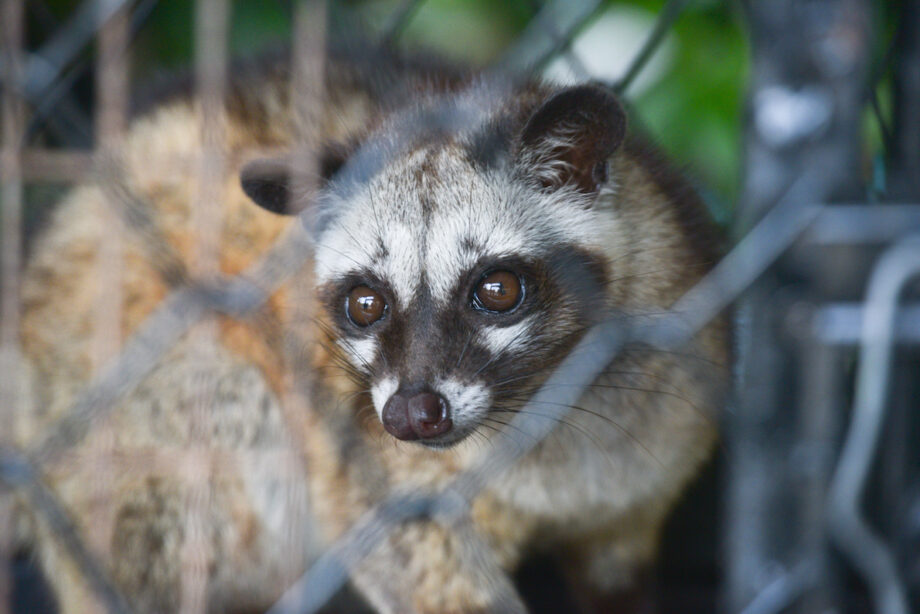
Civet cats and other wild animals traded as pets can carry emerging infectious diseases from their native lands to distant countries and continents. Photo © iStockphoto.com | SPmemory
Wildlife markets and wet markets are important both culturally and for food in many places, and bans could drive markets underground, making regulation and disease surveillance more difficult. But the risk of disease transmission is high, and many conservation and animal groups want more surveillance of animal trade.
8. Connect With Nature
Spending time close to nature both protects people against physical and mental diseases like depression, diabetes, obesity, ADHD, cardiovascular disease and cancer, and also strengthens the immune system. There is little agreement precisely how nature works in this way, but studies of gardening, hiking, “forest bathing,” outdoor yoga and other outdoor pursuits all confirm the healing power of the living world.
Long-term studies are rare, but researchers testing people before and after experiences in nature have shown that there are numerous conditions that contact with nature can improve.
In Denmark, people living more than 1 kilometer (0.6 miles) from a natural green environment were found to be more obese than those living closer. Raf Aerts, a biologist with the Belgian Institute of Health, and colleagues have documented how access to nature is linked to reduced respiratory, heart and cancer mortality. One survey of the medical records of nearly 350,000 people under Dutch doctors’ care showed that the prevalence of 15 illnesses was associated with the closeness of green space to homes.
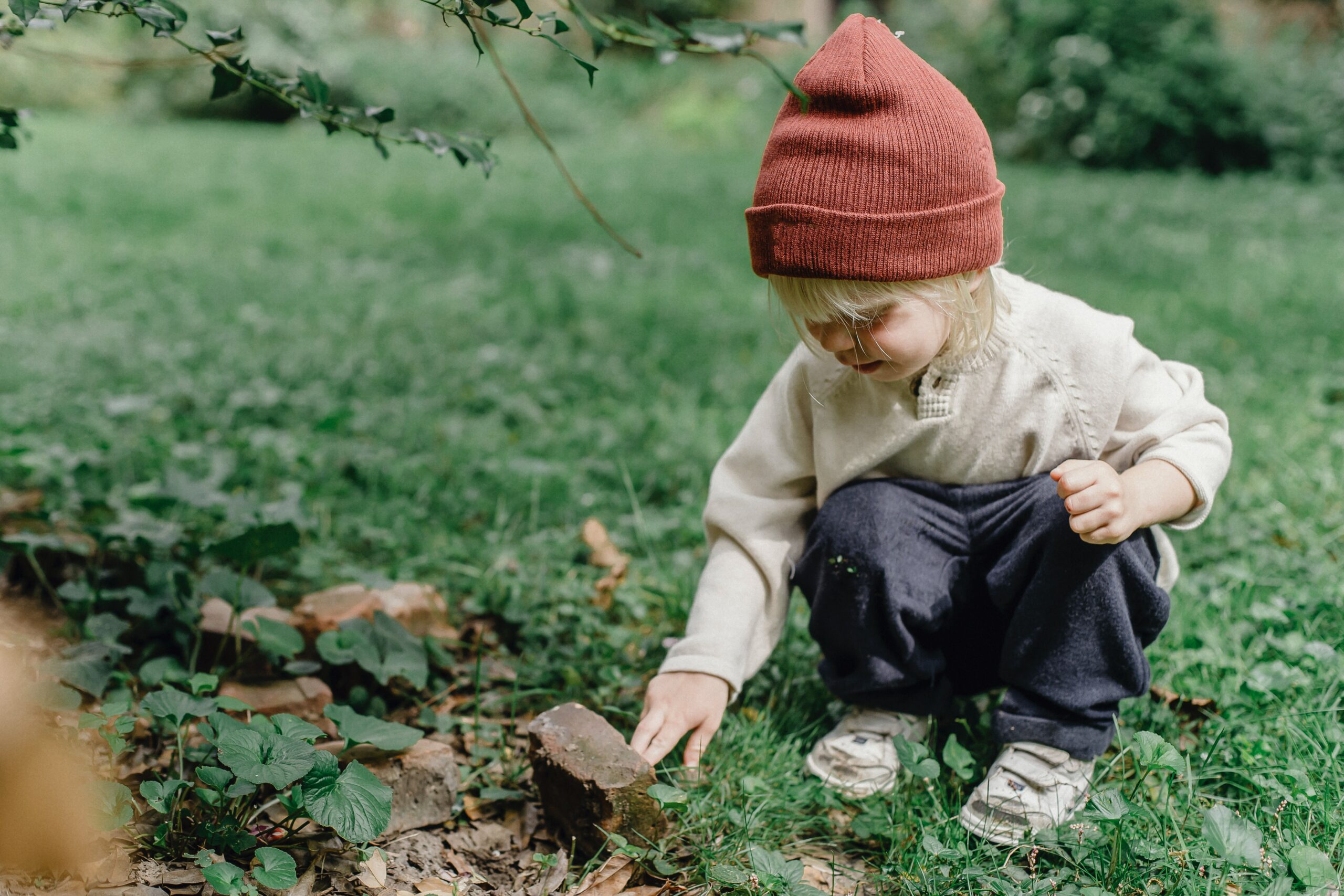
Research suggests that exposure to microbes found in nature can help a child develop a strong immune system. Photo courtesy of Allan Mas | Pexels
Graham Rook, professor of medical microbiology at UCL, London, suggests that early exposure to organisms that are naturally present in soil, water and food trains the human immune system to identify and react to allergens and threats.
9. A New Approach
Surveillance of known disease hot spots and animals, more control over markets and trade, vaccines for everyone and a better understanding of viruses and pathogens can all help reduce the threat of infectious disease, but scientists increasingly argue that pandemic prevention needs a fusion between veterinary, human and environmental knowledge.
Traditionally, doctors look after human diseases, veterinarians treat sick animals and ecologists and conservationists take care of natural environments. But the interdependence of the three is mostly ignored.
“Disease does not just magically appear from nowhere,” says Richard Horton, author and editor in chief of The Lancet. “The harms we are inflicting on our planetary systems are now a threat to our existence. The gains made in health and well-being over centuries can easily be lost, a lesson we have failed to learn from previous civilizations.”
Horton and others have pioneered the concepts of Planetary Health and One Health, which propose that the health of humans and other living things be seen as connected. This approach, he says, is a start towards controlling future diseases.
“We have learned that disease is increasingly the result of what people do in nature,” Horton says. “You cannot look at human disease in isolation from diseases in wildlife, any more than you can look at diseases of wildlife in isolation from changes taking place in the environment. If you can prevent the disease in the animal, you can prevent it in people.”
The world was not prepared for Covid-19, any more than it was for HIV/AIDS, SARS, MERS, Nipah, avian flu or any of the many other major infectious diseases that have emerged and spread in the past 50 years.
We may never prevent disease, but what we are learning to our cost is that pathogens are most likely to find new hosts at times of great environmental change — as is happening now — and that more pandemics like Covid-19 are certain if humanity continues to upset the balance of nature.
As populations grow, climate change impacts increase and we continue to interfere with natural systems, we can expect more disease. The choice is ours. Protect nature, or it will surely bite us back.
John Vidal’s book on this subject, The Fevered Planet, which was inspired by his original reporting for Ensia on the Covid-19 pandemic, will be published by Bloomsbury.
Related Posts
Ensia shares solutions-focused stories free of charge through our online magazine and partner media. That means audiences around the world have ready access to stories that can — and do — help them shape a better future. If you value our work, please show your support today.
Yes, I'll support Ensia!